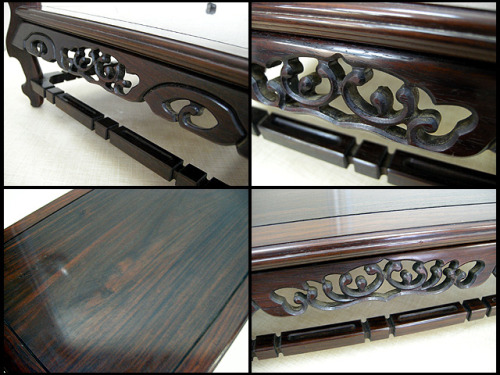 The term "Tangmu" is almost impossible to find in the works written by the Chinese people. This is the general term used by experts and timber scientists who study the history of ancient Chinese civilization in Japan for the use of some precious wood or handicrafts originating in China. A kind of wood.
The term "Tangmu" is almost impossible to find in the works written by the Chinese people. This is the general term used by experts and timber scientists who study the history of ancient Chinese civilization in Japan for the use of some precious wood or handicrafts originating in China. A kind of wood. Japanese wood scientist Sudo Akira believes Tang Mu: There is a saying of Tang Mu fine woodworking. Because the wood has a beautiful appreciation value and can be made of high-quality furniture, joinery and other crafts, the name is taken with the wood. Including rosewood, ebony, iron knife wood, etc., Including incense, Gala, Mei Tan and other incense wood.
The name of Tang Mu is due to the fact that timber was imported by the Chinese at that time, and Chinese crafts were named after Chinese Tang Mu or because of Chinese crafts. From today's perspective, the so-called precious wood is a decorative material. However, the name "Tangmu" is used in addition to wood as described above, and the valuable wood in other areas does not have the name "(Sato Akira, "Nanyang Wood", p. 215). In the book "Southern Wood", it can be called the main wood of Tangmu. Originated from the color and pattern of wood in leguminous and persimmon families, such as the sandalwood rosewood of the Leguminosae (which is the rosewood used in Ming and Qing furniture) and the rosewood produced in South and Southeast Asia; Barry Dalbergia, Dalbergia japonica, Cambodian Dalbergia, Knife-like Dalbergia, Broad-leaved Dalbergia (also known as Indian rosewood or Mumbai blackwood), Dalbergia japonica, Burma's O. dantea (also known as Dalbergia japonica, flowering branch) (Or rosewood) and Indian Dalbergia. The wood of the genus Dalbergia is divided into red rosewood and black rosewood in our country, and some people call it "new redwood." In addition to the Tangmu category, some of the wood species in the persimmon family are known by the Japanese as ebony and are also classified as Tangmu, such as ebony (known in Japan as "this ebony") and striped ebony (known in Japan as Striped ebony) and ebony (heartwood black, filled with green material in the catheter and Colored stripes, such as velvet persimmon, green wood persimmon, and ebony ebony (black and gray stripes, it is also known as marble wood and striped wood, zebra wood, such as marbled persimmon, Indian persimmon, both Wood is different from marble wood produced in South America and zebra wood in Africa. In addition, wood of fragrant wood is not listed here.
In the Qing Dynasty, Wang Shizhen's “Let's Talk about Chibei†called Xi Xi in the Ministry of Rites, see the four translators tribute to the confession, or that China is a Han Chinese, or Sui Tang people. It is said that the Tang people, such as the Dutch Siam Kingdom. Cover from the Tang Dynasty to China, so along the Yuner.†Like the concept of Tangren and Tangzhuang, Tangmu is also a collective name for precious and rare wood that originated in China but may not be native to China.
660nm LED manufacturer from China.
The color of deep red 660nm LED is deeper or darker than deep red 645nm LED and it can serve for plant grow, Electrical, plant lights and Test Equipment.
The light of 660nm LED can effectively promote plant growth.
We supply variety of 660nm deep red LED products. Including Through-hole 660nm LED, SMD 660nm LED and high-power 660nm LED. We can also produce 660nm LED according to your requirement.For the Through-hole Light Emitting Diode 660nm LED,
We can customize the shape, the lighting angle, the number of emitting source, the flat pin LED and braided LED. Such as: 5mm deep red 665nm LED, 5mm deep red 645nm LED,5mm deep red 650nm LED, 5mm deep red 655nm LED, 5mm deep red 660nm LED. 3mm deep red 665nm LED, 3mm deep red 645nm, 3mm deep red 650nm LED, 3mm 655nm LED, 3mm deep red 660nm LED.
There are many other shapes for your choose. Customized deep red LED are available.
For the SMD LED 660nm LED,
We can supply dual-chip deep red LED, three-chip deep red LED, multi-chip deep red LED, high voltage LED, flashing deep red LED and variety of size SMD LED. For instance: 3528 SMD deep red 665nm LED, 3528 SMD deep red 645nmLED, 3528 SMD deep red 650nm LED, 3528 SMD deep red 655nm LED, 3528 SMD deep red 660nm LED. 2835 SMD deep red 665nm LED, 2835 SMD deep red 645nmLED, 2835 SMD deep red 650nm LED, 2835 SMD deep red 655nm LED, 2835 SMD deep red 660nm LED.
There are also have many other shapes to choose, like the 5050 SMD deep red LED, the 5730 SMD deep red LED ect. You can choose any one of them for your requirement.
660nm led is a deep red LED. Common deep red LEDs are like: deep red 665nm grow light LED, deep red 645nm grow light LED, deep red 650nm grow light led, deep red 655nm grow light led, deep red 660nm grow light led and so on.

We will do the High temperature resistance testing and 10 hours ageing treatment before the product out off the factory, which can ensure the stability of each product.
Our LED products have 5 year warranty.
We are the best supplier for your light-emitting diode.
660Nm LED,660Nm UV LED,Red LED 3W 660Nm,High Power LED 660Nm
Shenzhen Best LED Opto-electronic Co.,Ltd / BESTSMD CO LIMITED(HK) , https://www.bestsmd.com